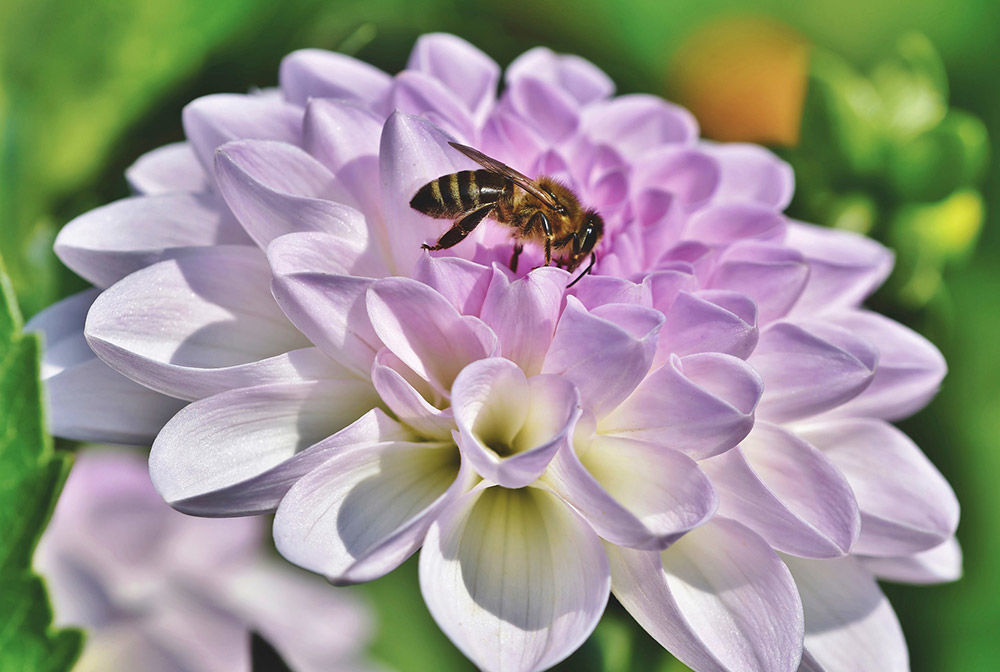Spring beekeeping checklist
Taking care of your bees this spring.
Spring is finally here. For most people, that means warmer days, fresh green leaves, and adorable lambs. For beekeepers, it means eggs, larvae and honey production.
As the days get longer and the weather gets warmer your queen should be laying more eggs, workers should be venturing out of the hive in search of flowers and the population in your hive should be increasing. After surviving on stored honey through the winter, honey production needs to ramp up to keep the colony fed – if there isn’t enough nectar around, your colony could starve in early spring.
As the colony grows and honey frames start to fill up, bees can also outgrow their winter hives. If you don’t expand the hive to suit, your colony could swarm and you could miss a chance to start a new hive.
It’s a busy time for bees – and beekeepers. You need to keep a close eye on your bees, treat any issues, and add to your hives as the population grows and honey stores expand. Miss a key task, and you could lose honey, bees or even an entire hive.
Here’s our spring beekeeping checklist:
September – early spring
- Starting in late winter, check hives every 10-14 days.
- Look at the brood pattern – if there’s little or no brood, or if it’s dry, dark, greasy, or patchy, it could be a sign of disease.
- Check for new eggs – these show that your queen is laying. If there are none, it could mean your queen has died or disappeared and you need to buy another one.
- Look out for queen cells – if your bees have built these, it may be that your queen is weak or your hive is about to swarm.
- Watch for activity at the entrance of the hive – you should see more bees leaving and re-entering as the days get warmer.
- Check the hive entrance for dead bees – it’s normal to see a few, but if casualties are mounting up it could be a sign of disease or infestation.
- Examine the honey frames – if there is very little honey left, supplement the hive with sugar syrup.
- Remove the bottom board of the hive to clean and inspect – if you have insect invaders, you may see like or dead ones here.
- Keep an eye on the flowers blooming around the hive – if flowers are sparse, think about moving your hives to an area with denser growth.
October – mid-spring
- Continue to check hives regularly for signs of swarming – generally this could be a high population, queen-cell building and/or full queen cells. There are many articles on why swarming occurs and techniques to help prevent swarming, so its best to read up on this as a separate topic!
- Think about splitting your hive. Splitting you hive not only increases your apiary size but can also help to reduce the urge to swarm by reducing overcrowding.
- As the hive population grows and honey stores increase, add a new hive box and frames to give them space.
- Consider feeding a pollen supplement to boost hive health and increase brood production.
- If you have multiple active hives, think about buying or assembling a spare hive or nuc box to house any swarms that may emerge.
November – late spring
- Continue to check your hives every two weeks.
- When frames in your honey super reach 80-90% full, add another super. This is best done by under-supering. Under-supering encourages the bees to draw out and fill your new honey super faster. You can under super by removing the near full honey box, adding the new empty box on top of your queen excluder and then putting the near full honey box back in top. Continue this process throughout summer and watch your hives grow! Of course, if you want to harvest some honey early then take a super or some frames, processing all supers at the same time though is much more efficient.
- If you live in a particularly hot area, think about moving your hives into partial shade and adding ventilation holes before summer weather kicks in, ensure your bottom boards have good ventilation.
- If there’s no natural water source near your hives, add a tub or container of water to keep bees hydrated – include rocks or stones to make it easy for bees to land and drink.
Keep up with your busy bees
Spring may sound like an overwhelmingly busy time for beekeepers, but it’s mostly about keeping a close eye on your hives and giving your bees the space they need to produce plenty of honey. When you harvest that honey at the end of summer, all the hard work will have been worth it.
Looking for winter beekeeping supplies or advice? Talk to the experts at Ecrotek.

